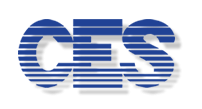
We now know that the recent freeze in Texas along with product shortages fueled by the pandemic has caused a national shortage on heaters. What was typically off the shelf, now takes 8-12 weeks or longer. Not good. One of our recommendations last week was to “take care of the heater you currently own.” Check out the photo from a failed gas heater exchanger and see the progression of fouling that clogged the exchanger, killed heater efficiency, and eventually killed the heater. Want to know how to prevent that?
Proper set up: Some folks just install a gas heater, plug it in, and walk away. Big Mistake. Like all mechanical items the heater must have a proper balance of flow, gas pipe size, gas supply pressure, air flow, venting, and more. It’s not complicated, and once it’s set up, it does not need to be repeated, just verified annually. This is why heater manufacturers REQUIRE proper set up, or ” commissioning”, before providing a warranty. So normally… no commissioning, no warranty. CES provides commissioning with all new heater installations, but most builders don’t provide, so it is up to you to request commissioning in order to qualify for warranty.
Instrumentation: Running a heater without instrumentation is like driving a car with a piece of cardboard over your instrument panel. Once properly commissioned, the heater will operate flawlessly as long as the major conditions don’t change. Proper instrumentation can help you assure nothing has changed, but is seldom provided for some silly reason. We recommend (3) devices per heater: an influent thermometer (inlet), and effluent thermometer (outlet) and a flowmeter which assures proper flow. CES Lochinvar heaters have (2) integrated monitoring thermometers, but many cheap heaters don’t, and it puts the pressure on you to provide them. As for the flowmeter, our new FlowVis flowmeter is 98% accurate even installed in short pipe runs, is temperature resistant, and also doubles as a check valve…an affordable solution.
Maintain efficiency: The build up in the photo didn’t happen overnight, but shows tremendous scaling which kills efficiency. How? Heat is transferred from the copperfin tube which heats up from the burner fire below…to the water passing through the tubes. The tube on the right not only has little water being heated, but the water is being severely “insulated” from the tube shell, so little heat is being transferred out of the gas being purchased. What’s the big deal? If you want to keep your pool at 82F, it can take many thousands of dollars more (per month or per year – depending on your pool size) to keep your patrons satisfied when the tubes are scaled than when they’re not. Did you budget for that?
Annual maintenance detects and prevents bigger issues: Annual preventive maintenance (PM) is the key to assuring efficiency, protecting your budget, and maintaining a long heater life. CES PM plans check all variables (gas, air, venting, flow) that affect proper operations, cleans scale from the tubes, and adjusts parameters to help prevent them from coming back. We can even install missing instrumentation, if needed. If all variables are correct, the exchanger doesn’t clog, warp, leak, or breach. Once there is water in the heater burner section, total heater replacement is often the cheapest solution.
Periodic monitoring and maintenance: You don’t have to wait until our annual makeover to assure proper operation. Periodic or weekly checks on temperature differential and flow can help prevent scaling and efficiency loss. Proper ongoing check on chemistry also is key. Why?
Proper water chemistry: Maintaining proper pH and chlorine via your CES controller is both simple and valuable to the heater longevity. Low pH attacks the copper fins, and the eroded copper can stain your pool green. High chlorine is not optimum either. High pH can “deposit” residue inside the heater including calcium, salt, etc. Besides contributing to scaling, salt, combined with improper flow, can wear a pin hole in the heat exchanger that will require replacement of the exchanger or the entire heater depending how long it is allowed to persist. A small investment in PM can prevent big expenditures later. As you can see above, it doesn’t take much to destroy a heater. While you’re operating your pool and facility the heater can be either purring away, flawlessly maintained annually, and lasting a decade… or it can be burning 5 times more gas to achieve the same customer-required temperature, and slowly killing itself, causing you to spend thousands of un-budgeted dollars to replace… IF you can find one.
We obviously prefer helping you maintain your heater, and offer affordable solutions to help this happen.
Contact your CES rep for more information on PM programs that help you enjoy significantly longer heater life, and experience less drama…and save lots of money in the short and long term.




